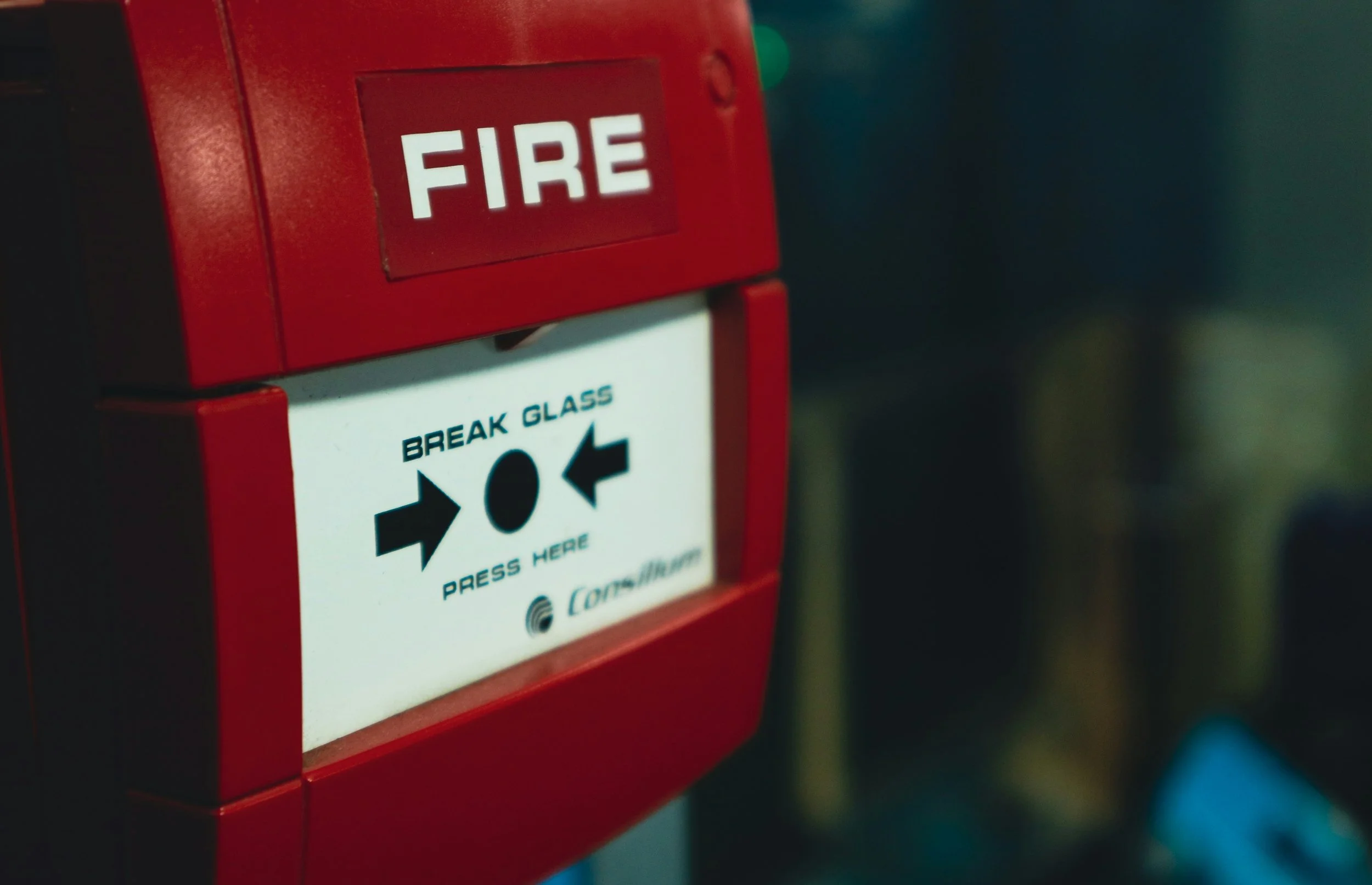The Pointy End of the Needle - Anaesthesia and IR
This is a written version of a talk delivered by Dr Andrew Weatherall for the Society of Pediatric Interventional Radiology conference held in Sydney, Australia in October 2025.
The task for this thing is simple. The request was to deliver a summary of all of paediatric anaesthesia as it relates to interventional radiology. In 12 minutes. And while I can talk almost as fast as voice actors at the end of a political ad, it could make you feel a little like your very niche subspecialty just doesn’t get the recognition or room it deserves.
But then when you remember it’s for a pediatric interventional radiology conference you realise this is a group who knows a bit about not being given enough recognition.
So all you can do is plow on.
Oh, and announce something really exciting.
But first …
It is actually pretty difficult to find tomes dedicated to the intersection between paediatric anaesthesia, the specialty of keeping children comfy and safe, and interventional radiology, the specialty of maximum intervention with minimal invasion.
Our usual solution for that is to draw the parallels we can from the adult literature. However in this area of practice there is also a lot of the literature that isn’t that helpful for a variety of reasons:
There is quite a bit out there in the IR settings that focus on general anaesthesia (offering the benefits of ideal procedural conditions and a degree of control over things plus maximum comfort during the case) vs local anaesthesia (offering the benefits of continuous direct neurological assessment in neurointerventional procedures and shorter overall anaesthesia times meaning more efficiency) vs conscious sedation (a bit both ways).
Many of the adult bits of literature have very adult-specific problems to wrestle with (e.g. BP targets in the context of endovascular therapies).
There are a few key things for any IR situation that make anaesthesia in this clinical context a little challenging:
The location is often remote (though plenty of newer hospitals are welcoming IR suites into the theatres footprint) which gives you scope to feel generally isolated and even more alone in an emergency.
Access to the patient is limited and you can end up needing to bridge large gaps to reach small people with your airway circuits and IV connections.
Some of the specific interventions require very particular conditions for the proceduralist or inflict very particular things on the patient that require direct attention.
The comfort zone factor is not in the anaesthetist’s favour - the simple truth is even the most engaged practitioner might see neurointerventional procedures fairly infrequently which means familiarity is never quite established.
Oh, and as a bonus it comes with radiation exposure. This is not huge and can be managed. But it is still a whole extra thing to weigh on the mind.
So paediatric IR is its own set of challenges for the anaesthetist and perhaps the real value in this thing is acting as a sort of translator between the groups so we can do the thing that probably makes the biggest difference to patients - working well as a team.
Linking the language everyone speaks might be all that can be achieved in 12 minutes.
The Announcement…
But I did mention that at a conference you want to hear about new stuff. So this is the announcement bit. The exciting thing for this conference is that it appears we’ve defined a newer autoimmune pathology linking a range of common procedures. Every part of the description has to be a little bit obscured because it’s just about to go to publication and we don’t want to pre-empt that.
It’s just lucky for us that the particular pathological hallmark of what we assume is an autoimmune thing, the trigger for which is still unclear because we refuse to just assume it’s COVID, has popped up across a few common IR scenarios which come with their own unique needs. So perhaps it’s time to offer up the prototypical patient.
The CT Scanner
Procedures in the CT scan are not necessarily the first thing that comes to mind but it was in a patient with a lung nodule for biopsy. that we first came across this pathology.
Of course a CT seems pretty straightforward but even that has very specific requirements to produce either great images or good conditions for an intervention. That has all been covered somewhat by the area all about anaesthesia for CT scans on this site (although in this setting, it’s unlikely you’ll use the opening letter of the key mnemonic - the one that says ‘seriously?’. It’s fair to say most of the time you’d expect a general anaesthetic comes with the territory.
Lungs and Skin - The Bleomycin Conundrum
The specific needs for a CT scan might be easy to cover in a quick chat. But it does not take too much effort though to find specific IR interventions that come with much more specific anaesthetic considerations - bleomycin might be the most obvious. example.
Whether as a sclerosant itself or being used with the encouragement of an electric current as part of BEST therapy, bleomycin has a vital role in low-flow pathologies but provides a lingering headache for the anaesthetist.
It could just be bleomycin that provides a prime example of ‘things the anaesthetist wants to be warned about by the IR specialist’.
As localised as the application of bleomycin might be at the end of the interventionists needle, it’s not usually that tissue that has the risk of later complications in the form of respiratory or skin changes.
Both lungs and skin have lower levels of bleomycin hydrolase and that might explain why patients, previously exposed to bleomycin, have a greater risk of showing complications in those two area.
In the case of lungs there is a progressive fibrosis that is triggered in the presence of higher oxygen concentrations. There are different descriptions of what particular risk factors suggest an elevated likelihood of this respiratory issue. Frerk et al in 2007 described in a humble letter the key risk factors as being evidence of prior damage of lung parenchyma, receiving bleomycin in the 2 months before you are providing your oxygen to the patient, and reduced creatinine clearance (as well as a threshold total dose above 450 mg). In 2009, Kessel et al suggested there is a risk of bleomycin lung if there has been any exposure in the prior 12 months.
Ultimately the consensus is that management of these patients includes minimising alveolar hypoxia (unless addressing an emergency where oxygen is the best answer) and maintenance of good lung recruitment while paying careful attention to avoiding excessive fluid administration.
And while Jayakrishnan et al described care of a patient having major surgery lasting 8 hours at some point after their bleomycin exposure, their use of nebulised salbutamol and budesonide pre-op does not necessarily have clear backing in the literature as either improving their perioperative care or reducing the risk of subsequent development of bleomycin lung.
The story doesn’t end there of course. The skin is also predisposed to issues like the development of pigmented changes (flagellate dermatitis) that can be worsened by any form of micro-trauma. There are even descriptions in the literature of removing all adhesive from ECG dots then wrapping all monitors and sensors in Coban to avoid any adhesive effect on the skin. The alternate of course is to use the sort of tape that does not do the job of actual tape and stick to the patient. Nobody has time for that. But also we have to make time for that.
Ultimately needing to give bleomycin remains pretty easy to communicate in a chat for the interventionist and of all the types of presentation with our new disease this one is as straightforward as any.
Getting in each other’s heads
So perhaps the real test of teamwork is the interventional procedure where the stakes feel higher and the exposure to the clinical scenarios fewer and farther between - endovascular therapies.
And it’s just the sort of case we’ve been forced to undertake as some of our patients with this new pathology have presented with cerebral aneurysms requiring the efforts of the interventional team.
This is a visual metaphor you have to work a little at to appreciate that anaesthesia for endovascular procedures stands out from all the familiar stuff because it is rare and the needs are so different. I’m sure you get it.
Even more than either of the other scenarios mentioned before, communication here is critical.
However it is also exactly the scenario where we’re likely to communicate badly. We do not do the cases often. The evidence regarding how to do it isn’t as settled as for adults (and it’s not super settled in those giant types). And it’s sometimes in stressful emergency situations where the chances of a slip, lapse or forgotten detail go way up.
So perhaps this is the scenario where getting on the same page could use some help.
Just as well there’s an easy way to remember what we as paediatric anaesthetists need from our interventional colleagues - a NEEDLE
Maybe not with ‘generic blue science’ liquid in an attached syringe. Just the needle.
If we communicate where we are at Now, what your Expectations are throughout the procedure, what we will do in an Emergency, any specific Drug considerations, all the Line considerations on both the IR and anaesthesia side, and how we plan to manage Emergence and After Care we can be pretty much ready as a team for anything. A NEEDLE to help us all.
But if it’s so important maybe a little more explanation would be reasonable.
Now
In many ways this is the key question for a lot of anaesthesia. We need to figure out what the patient’s clinical status is right now through a combination of information from the proceduralist and our own assessment.
And it encapsulates a key consideration of timing for the anaesthetist - ‘if this is where we are, is there anything we can make better within the timeframe before this procedure has to happen?’
Because we’ll always want to allow any excess risk to be lessened (for example waiting a little longer after that recent URTI). But if the patient has something at high risk of causing problems, then we have to get on with things regardless.
‘Now’ also includes an explanation for what we’re planning to do about it - what is the actual procedure being undertaken and with what goal in mind.
Expectations
This is a part of the discussion that really benefits from the wisdom and insight of the proceduralist. What does the interventionalist intend to do in a step-by-step fashion? Are there any things expected on the basis of requirements of the procedure (e.g. is the micro-catheter being used going to constantly put out a little fluid to flush the tip thereby influencing the fluid status of the patient??)
Just as critically what do they expect to happen and what things might we observe along the way. There is not much that makes an anaesthetist happier than when the proceduralist gives a warning that a painful or noxious stimulus is about to enter the frame.
It can, of course, be more extreme than that. The phenomenon of respiratory events induced by a catheter approaching the retinal artery, as in intra-arterial chemotherapy for retinoblastoma, is now well described but an anaesthetist stepping in to be part of such a procedure may still not have heard of it because it’s not common in the big wide world.
These are not small changes either with the description of respiratory compliance measurements falling by 80% or more being part of the observed spectrum of challenges. That is exactly the sort of news you’d rather hear about prior to it happening than after the fact, even though prophylactic measures such as increasing depth of anaesthesia appears to make little difference.
This one is also the prime target for, well, setting a target.
For plenty of endovascular procedures there might be multiple consensus statements on blood pressure targets. These targets don’t deal with paediatric patients so well. For every guideline suggesting that the patient’s blood pressure should hang in the 140-180 mmHg systolic range, a child is somewhere wishing anyone would do the work to define best limits for those who can’t vote.
For now the only real guidance appears to be ‘look at their baseline blood pressure and stay within 15% either side of that, or above the 50th centile for their age if you don’t have that baseline established’. But it’s hard to hit a target if you haven’t set a target and the clinician doing the procedure may want to set something slightly different. So this point is where you cover that.
Carbon dioxide is far easier. Aim for normal.
Emergencies
Briefing emergencies are particularly important in these scenarios where help might mean a quick trip somewhere else entirely, as might be the case if an aneurysm ruptures.
A two-way discussion up front of a few key potential emergencies with a plan of action can be the critical difference if a problem arises. It’s as simple as saying ‘if anyone observes [insert particular clinical changes, such as an increase in blood pressure with bradycardia as you might see with an intracerebral haemorrhage] then the response on the procedural side will be [x] while it would be helpful if [these clever things] happened at the anaesthetic end.
In a review by de Sloovere way back in 2014 some simple measures were suggested for some of the key complications:
Haemorrhage - consider reversal of any heparin, lower the blood pressure and pack the area of haemorrhage internally where appropriate, with a back-up option of immediate craniotomy.
Occlusion - possibly as a result of thrombus material (or even vasospasm but that is mentioned below). The first measure is likely to involve increasing the blood pressure above baseline, followed by consideration of options like intra-arterial thrombolysis or systemic anti-aggregant agents such as tirofiban. It is clear enough you want to have agreed on an approach up front.
Vasospasm - another case to consider increasing the blood pressure above baseline and talking up front about any intra-arterial medications that might be tried so that no one gets a surprise, vs a balloon angioplasty to resolve the issue.
Better to chat before someone has to break the emergency glass
Drug Specifics
Heparin and whether or not we will reverse not is the easy part of this question. Is there a chance we will need to administer tirofiban? Or IV aspirin? Because if the answer is yes it might take a bit to get ready. Better disclose that up front.
While we’re at it there’s one thing you probably can discuss less - the specific anaesthetic agents. While there are pre-clinical studies with suggestions of reductions in specific markers that suggest a neuroprotective effect from specific agents, there is not really any robust evidence that any of those choices make a difference to the functional outcome for patients. The most we have is retrospective work in a small cohort suggesting lower mortality down the track with propofol compared to sevoflurane. However it’s not exactly reproduced by multiple authors so there’s still not really much to see here.
What is reasonably certain is that maintaining stable haemodynamics, ensuring ventilation to a normal carbon dioxide level (not lower or higher), normothermia and hydration all matter more than the specific anaesthetic agent. Everyone can leave it up to the anaesthetist to choose the agents that will guarantee those conditions best in their hands.
Lines
An easy enough thing to cover - which lines will the interventional team place and which ones make sense for the anaesthetist to add? This almost always means invasive arterial monitoring in the setting of endovascular procedures, with a low threshold for central venous access as a way of managing vasoactive agents if there is is to be any targets set.
Emergence and After Care
The end is just as important as the beginning so a clear plan for the end is worth stating up front. Is the plan to try and produce rapid, but smooth, emergence to allow neurological assessment? Or is this a case of further care in the intensive care unit in a well-sedated and analgesed patient?
Even with the former approach of course you could still make the case for being in the intensive care unit for ongoing care. However there is the suggestion in adult settings that most significant complications would occur within 4 hours, opening up the possibility of subsequent care on the ward very safely after an initial observation period.
Whatever the choice, choosing an appropriate place, and weighing up the pros and cons of early wakefulness is part of this core discussion along with how to keep the patient comfortable if they happen to have some risk of pain afterwards.
That seems to cover it. In fact you could probably use it for the other examples of procedures already mentioned above. It would just be a slightly quicker chat.
But it turns out all you need to do before the needle is to NEEDLE. As a team.
That new disease
So what a fortunate thing that seeing this pathology in patients needing a whole range of procedures, CT-guided biopsies, bleomycin for low flow malformations and endovascular fixes for cerebral aneurysms helped us focus on the vital elements to do the work well together.
Now if we could just come up with a name for this condition where the immune cells have this really classical appearance thanks to inclusions in the cytosol, we could finalise the publication plan.
What a pity I can’t share the actual images yet. But if I could provide an artist’s impression, it would look a little like this…
I am sure you’ll agree it’s a really striking appearance
Of course the picture gives it all away. There is no new condition. I can only ask for forgiveness.
But let’s be honest, I had to try something to keep a room full of interventional radiologists paying attention to a whole 12 minutes of paediatric anaesthesia.
And no one will ever know and it will never be spoken of again. It’ll be the secret disease that never was.
Except that it is on the internet obviously which also means it is already part of ChatGPT’s plan to rule us all.
Damn it.
Useful Things to Go and Read:
To be honest I found it hard to find good reading specifically on the topic of anaesthesia and paediatric interventional radiology. This might be due to the amount of available literature or just not getting the terms quite right (in which case * help * please).
But there are a range of things out there to read and it’s always better to go the source (not that it’s every single thing I read along the way).
That paper tackling the issue of radiation exposure for anaesthetists is this one:
How about some guidelines?
For interest, here are the 2019 guidelines for stroke management in neonates and children from the American Heart Association (though they point to revascularisation therapies as controversial and blood pressure management within that as lacking clear guidance):
These ones are not specific to paediatrics but still an interesting read of some French guidelines that focus on thrombectomy procedures in stroke.
The SNACC guidelines are getting a little older since they were published in 2014 but they are from a bunch of people with a deep focus on this area.
Right, into some review articles…
This review has a focus on cerebral aneurysms and dates from 2021.
This also has a focus on aneurysms and covers some of the issues for any anaesthetist with neurointerventional work as well as touching on the steps to take in a variety of emergencies:
And this one has some solid stuff on GA vs LA and outcomes (adult-based of course); both stroke and aneurysm care and particularly but covers a bit on the importance of carbon dioxide control:
This paper is a little alongside endovascular work as the focus is specifically on Moyamoya and the focus is surgery. It does have the benefit of being about paediatrics and some of the elements covered a very resonant with the measures required to try and optimise perfusion in cerebral tissues at risk:
When it comes to specific agents all I really found was descriptions of pre-clinical work or marker studies suggesting maybe a range of different agents were neuroprotective in some fashion but nothing really confirming an actual difference in patient outcome if choosing say, propofol TIVA over volatile. There is this one retrospective review in stroke (adults) that did not show a difference in ‘favourable functional outcome’ but suggested a lower 90-day mortality rate with propofol (11.5%) vs (29.3%), with a bigger effect if the patient was thrombolysed. However, it’s only 93 patients and the authors note that’s not much to go on. Perhaps this all stresses managing physiology with BP and CO2 are the key areas of focus.
On to bleomycin.
That letter from Frerk et al is this one:
Frerk CM, George N. With bleomycin, that’s too much oxygen. Eur J Anaesthesiol. 2007;24:205.
The Kessel correspondence is actually a series of 3 years of experience:
The Jayakrishnan case report is this one:
The report covering precautions for skin management in bleomycin is this one:
Now, getting onto those very big changes specific to intra-arterial chemotherapy, there are 3 papers to provide some perspective:
And finally a thing looking at complication rates when an (adult) institution moved from mostly ICU admissions to mostly PACU then ward care that is sort of interesting is right here, as well as an editorial from the same publication:
A big thanks to Dr Matt Hart for the assistance with finding references, any references, for this work. And to Dr Jeeves Perera for providing feedback and clever insights.
And this is absolutely put out there in the hope that cleverer people will add their perspective, feedback and improvements. It’s a big topic to tackle and there is every chance there are some gaps to fill or nuance to add.





